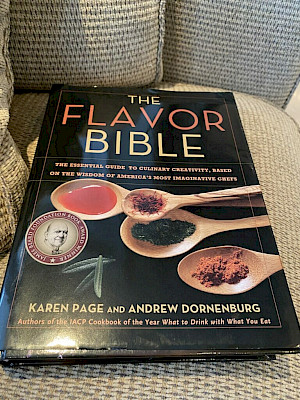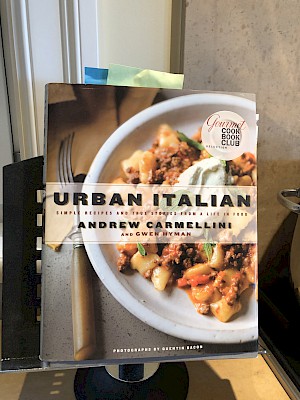The Flavor Bible Gains a New Disciple
March 25, 2021I own dozens of cookbooks about every cuisine you can possibly imagine. So, when a friend suggested one I hadn’t heard of, called The Flavor Bible, my first reaction was one of indifference.
But I can now say The Flavor (that’s Flavour for our Canadian readers) Bible, by authors Karen Page and Andrew Dornenburg, is a must have in every kitchen. It’s not actually a cookbook: It’s more of a book that will educate you about how flavors work and what food categories go together best. The book is packed with tips and information about every ingredient imaginable.
 I found this book very useful, as I taught myself to cook in my early twenties. (I recently decided to take professional cooking lessons.) I learned to make great dishes by simple trial and error. You can always tell by the body language of your dinner guests if your dishes truly resonate and, in most cases, my guests seem to love my cooking. However, there are those times when you know you have messed up and not understanding how flavors work is one of the most common mistakes made by homecooks. A great example and a tip I learned from reading this book
I found this book very useful, as I taught myself to cook in my early twenties. (I recently decided to take professional cooking lessons.) I learned to make great dishes by simple trial and error. You can always tell by the body language of your dinner guests if your dishes truly resonate and, in most cases, my guests seem to love my cooking. However, there are those times when you know you have messed up and not understanding how flavors work is one of the most common mistakes made by homecooks. A great example and a tip I learned from reading this book
was the common overuse of basil in tomato sauce. I had learned to temper the amount of basil through trial and error, but, had I read this book 30 years ago, I would have learned that the overuse of basil results in a bitter flavour. And the same goes for rosemary.
The first thing the book teaches is that there are basically only four flavors: bitter, salty, sour and sweet (five if you include umami, which is a savory meaty flavor). These flavors have certain features that you can combine in specific ways and often serve a purpose, such as stimulating appetite. Salt is nature’s flavor enhancer and also stimulates thirst. It’s why they serve you salty peanuts in a bar. Its use is universal and it has been a staple for both flavor and preservation of food since before recorded history. It was an indispensable commodity and the Romans even paid their soldiers with salt.
The book also talks about the “X” factor that impacts food experience: all
the things that are perceived by our other senses. Fragrance, aesthetics and location are all important factors. Last summer, I wrote an article about finding the best tomatoes in the world, and I had to admit that tasting tomatoes while in Italy makes them taste better partly because, well, you are in Italy! It’s the romance and all the other emotions that being physically present there helps bring to the surface.
Some of the tips you will pick up from this book are things you might already know. For instance, tomatoes and basil go together like Netflix and chill. And peanut butter is great with bananas. But did you know that parsley goes well with bananas or that white chocolate works well with caviar?
I put the book to the test recently when I was making a recipe for a cod salad with roasted potatoes and olives from Gino’s Hidden Italy by Gino D’Acampo. The recipe called for juniper berries, which I could not find anywhere. I looked up juniper berries in The Flavor Bible and discovered that gin (which is made of juniper berries) works well as a substitute. So, I used gin and the salad turned out great.
You will also learn some interesting facts as you browse through the book, such as the fact that bitterness suppresses sweetness, or that fried foods need a big zap of acidity to get through. You’ll learn that cucumber and mint are “cooling” foods and that nutmeg is a “warming” food. I always wondered why my mom used nutmeg in her meatballs. It’s a winter food.
I will keep The Flavor Bible close at hand from here on in. It will be especially useful when I need to substitute ingredients I can not find and help me be more creative in my cooking.
Originally published on Modernfarmer.com










